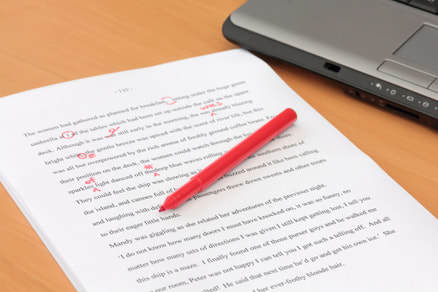Preparing Manuscripts for Submission
 You've written your best manuscript, whether it be a novel or an article, and you've proofread it until your eyes bled. Before you put your manuscript in the mail to an editor, you must be sure you present it properly.
You've written your best manuscript, whether it be a novel or an article, and you've proofread it until your eyes bled. Before you put your manuscript in the mail to an editor, you must be sure you present it properly.Editors read dozens of manuscripts, often at home. They're easily able to form a quick impression of each submission solely based on its appearance. The bottom line, it needs to be professional. To do that, I'll share some tips to help get your manuscript chosen for publication.Try to Make the Editor's Job Easier - Some editors prefer queries and submissions via email, while others won't even look at these submissions. Some prefer manuscripts be an attached word document; others only accept hard copy mailed submissions. Be sure you provide the editor with exactly what's specified. Editors need room to write on your manuscript, so double-space your text and the margins should be set to at least one full inch on all four sides. Also, keep it left justified, so it doesn't add any annoying spaces between letters and words.Select Your Print Style - When choosing a font, it really is a matter of taste and readability, however using proportional fonts such as Courier and Times Roman 12-point, will provide clear type large enough for an editor to read easily. Within the text itself, pay attention to how you set up type. You may think a special phrase deserves an extra impact, but this decision belongs to the editor. Do not use creative fonts! If you want to emphasize a word or phrase, underline the words to be italicized. Editors prefer underlining to actual italics because it's easier to spot when the manuscript goes into production.Set Up Your Page Format - Set up the first page so the editor can identify you as the writer. In the upper left-hand corner, single-space your name, address, phone number, and email. In the upper right-hand corner, show the approximate word count, rounded to the nearest 25 words. This doesn't need to be duplicated on every page, however, do include a header that shows your surname, title, and page number on consecutive pages. Center your title in all capital letters and center your name underneath in initial caps. Then double space twice and begin your text. On subsequent pages, skip four lines from the heading and begin typing text. With a book manuscript, position the chapter number and title on the first page of each chapter the way you would position the title on the first page of a magazine piece, halfway down the page. At the end of your manuscript, leave the rest of the page blank. Always check your publisher's writer's guidelines for specific instructions.Typing Tips - As you know, only use one space after a period. Do not break words at the end of lines. Hyphenation hampers readability. Remember to underline a word if you want to emphasize it.Dress Your Manuscript for Success - Once you've formatted your manuscript professionally, use quality supplies to send your final copy to the editor. Select 20-lb. white bond paper and stick to black ink. This may sound like a silly statement, but some people think using colored ink makes their manuscript stand out. It doesn't. Don't staple or bind your manuscript pages together in any way. Use a paper clip for a magazine piece and a rubber band for a book manuscript. Below is an example of the formatting for your manuscript, and remember...Keep on Writing! [image error] [image error] source: Long Ridge Writers Group
Published on December 03, 2018 04:00
No comments have been added yet.



